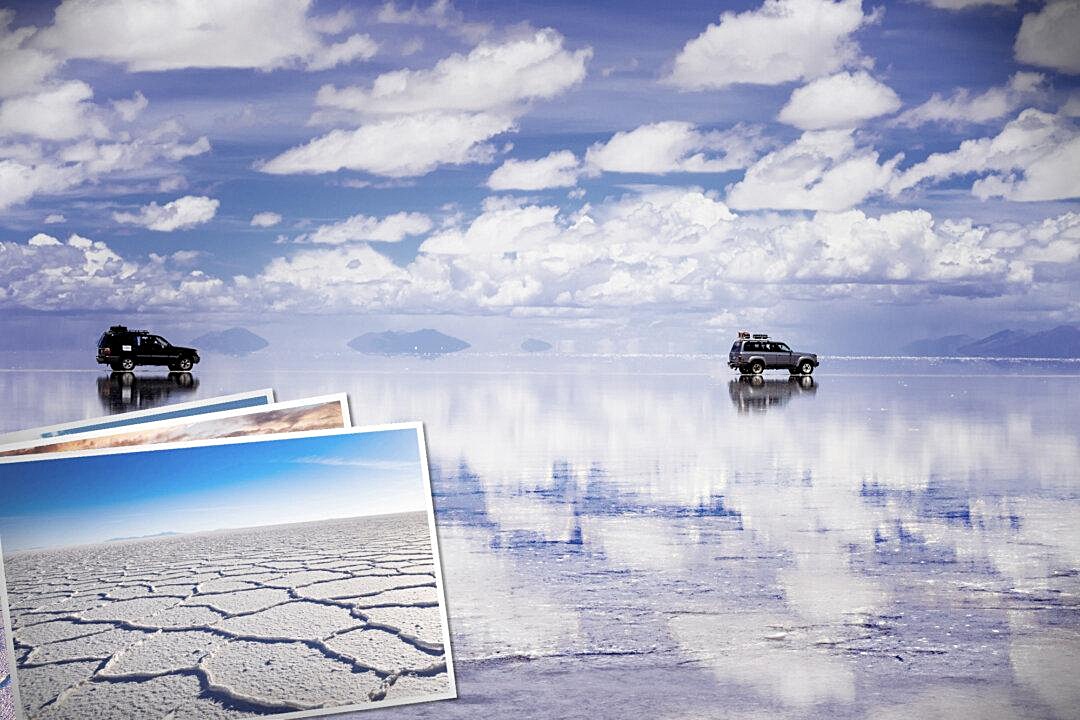Standing on the largest salt flat in the world is like being on a colossal mirror. During Bolivia’s rainy season, a thin sheet of water covers the expansive flats of Salar de Uyuni, creating a vast reflection of the sky. The visual effect is so mesmerizing that it becomes difficult to distinguish where the land ends and the sky begins.
Salar de Uyuni, located in the southwest of Bolivia, is one of the most surreal places on Earth. Spanning over 4,050 square miles of the Altiplano region, this salt flat sits at an altitude of 4,000 yards near the peak of the Andes mountain range. The sheer size of the salt flat is astonishing; it is so vast that it could contain 150 different countries, including Jamaica, Qatar, and the Bahamas.



Salar de Uyuni is visible even from space. Astronauts Neil Armstrong and Buzz Aldrin once described it as an enormous white sheet when seen from the moon. At the time, they assumed it was a giant glacier. However, Armstrong promised himself that he would visit the site upon returning to Earth. True to his word, he later became one of the first tourists to explore Salar de Uyuni and was absolutely captivated by its breathtaking beauty.
Salar de Uyuni was formed by ancient lakes drying up in the high plateau region of the Altiplano. These lakes left behind a desert-like landscape covered in thick salt crusts arranged in hexagonal patterns. Around 30,000 to 42,000 years ago, water from the surrounding mountains gathered here, creating Lake Minchin. As there were no outlets for drainage, the lake gradually filled the enormous land mass. Over time, the water evaporated due to aridity and rising temperatures, leaving behind the dense salt crusts. Even today, the water beneath the surface continues to evaporate at a rate that exceeds precipitation by ten times, making Salar de Uyuni an endless source of salt. It is estimated that this salt pan holds a massive 10 billion tons of salt, with approximately 25,000 tons being extracted annually.
Beneath the salt crust, large reservoirs of lithium-rich brine are concealed. Salar de Uyuni is part of the “lithium triangle,” which includes regions in Argentina, Bolivia, and Chile. It is the world’s largest source of lithium, accounting for 70 percent of the Earth’s supply. Mining for lithium, often referred to as “white gold,” began in this region a few years ago, as this valuable mineral is essential for powering electronic devices like smartphones and electric cars. The first state-owned, industrial-scale lithium mining plant was opened in December 2023.


Although there is some concern about the impact of lithium mining on the region’s limited freshwater supply, tourists continue to be drawn to Salar de Uyuni, enticed by the opportunity to walk among the clouds.
“As far as you can see, it’s just a reflection of the clouds,” one tourist exclaimed. “I’ve never witnessed anything quite like this before.”
The best time to experience the surreal convergence of the sky and land is between November and April. During this period, a layer of rainfall amplifies the reflection, creating a reflective symmetry that resembles a dreamlike scenario. To fully immerse themselves in this enchanting dreamscape, many visitors choose to stay at one of the local white salt hotels, crafted entirely from blocks of salt.
Discover more from Tension News
Subscribe to get the latest posts sent to your email.

